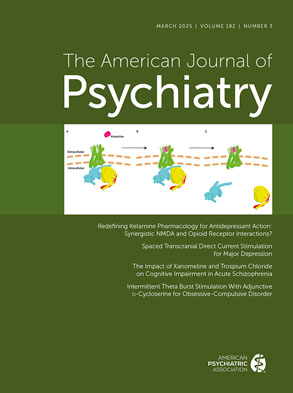Glen O. Gabbard’s Textbook of Psychotherapeutic Treatments is a rich, comprehensive resource and compendium highlighting today’s various schools of psychotherapeutic intervention. This text would be a useful addition to the library of any psychiatrist or mental health professional. As one might expect from a multi-authored text, there is some variability in the readability of the prose styles of the numerous contributors. Additionally, one will find an occasional overlap, repetition, or discrepancy (e.g., dialectical behavior therapy is described as a form of cognitive-behavioral therapy [CBT] in one section and is given its own chapter in the integrative therapies section). Despite these minor flaws, the chapters are (as of the publication date) state-of-the-art reviews, written by well-recognized leaders and researchers in their respective psychotherapeutic disciplines.
The book is organized into the following sections: 1) individual psychodynamic psychotherapy; 2) individual CBT; 3) individual interpersonal psychotherapy; 4) individual supportive psychotherapy; 5) group, family, and couples therapy; and 6) forms of psychotherapy integration. The chapters of the individual therapy sections are further organized by the subheadings of theoretical models, techniques, application to specific disorders (i.e., efficacy and indications) and combining each psychotherapeutic approach with medications. This organization permits the reader to more easily compare and contrast the different individual psychotherapy schools. This structure breaks down into the final two sections on group, family, and couples therapy and forms of psychotherapy integration in which the style and content have more variability. (Dr. Gabbard contributes two chapters: Techniques of Psychodynamic Psychotherapy and the last chapter on Professional Boundaries in Psychotherapy.)
I actually found the review of Theoretical Models of Psychodynamic Psychotherapy the most difficult to read. Perhaps this was because the sections describing the theoretical models of the different psychoanalytic schools reminded me of the relatively long and complex history of psychodynamic theory in contrast with the briefer, research-focused, and manual driven approaches of the newer individual therapies. By condensing so many schools of psychoanalytic theory into just a few paragraphs each (and then dismissing many of them), the authors did not do justice to these schools of thought. Granted, the authors were limited in length to one book chapter. Someone seeking a more readable summary of psychoanalytic schools might consult Greenberg and Mitchell’s
Object Relations in Psychoanalytic Theory (1) .
The chapters on CBT and interpersonal therapy demonstrate more recent and research origins, as they are more succinct and offer an abundance of randomized clinical trial research on efficacy. All chapters highlight the limited research data on many specific diagnostic categories. The psychoanalytic psychotherapy efficacy data has since also been published in the
Journal of the American Medical Association (2) . While there were some excellent methodological discussion regarding efficacy and effectiveness and the proper research approach to study psychotherapy (particularly long term), I was disappointed there wasn’t even a more evidence-based medicine discussion critiquing the quality and different types and levels of evidence, outlining the selection criteria, and reviewing the role of qualitative research in this area. For example, while different authors cited the greater long-term efficacy of CBT over medications, there was no discussion of the difference between medication follow-up in clinical practice as opposed to that in a time-limited research protocol. There seemed to be a need to document validity via randomized controlled trials.
The sections on technique provided helpful insights into the methods used by different schools, even though the descriptions of the differing techniques (with references where appropriate to training manuals) were abbreviated. Clinical examples were frequently interspersed to demonstrate the technique, although not in a consistent manner.
Because my practice focuses on individual therapy, I found that the chapters on families, couples, and groups provided a helpful update on how these fields have matured and diversified. For example, couples therapy has at least the following three approaches: attachment-based emotionally focused, psychodynamic, and behavioral. CBT now has a group methodology for managing chronic pain. There are family interventions that focus on psychotic and severe mood disorders. Similarly, the chapter on dialectic behavior therapy serves as a very useful introduction.
The chapter on psychotherapy integration suggested that attempts at integration are not an uncommon practice for the experienced therapist and that patients tend to improve regardless of the technique used. For example, one cited study reported equal success using three different protocols for CBT by experienced CBT therapists. Research has identified common factors and the patient account for 70% of outcomes, while technique has only identified as responsible for 15% (and 15% for placebo effects). Thus, the patient, the therapist, and the strength of the working alliance are the key outcome variables. Although it was a little troubling to learn that there were now separate schools of integration techniques, this is a chapter well worth rereading.
The chapter on mentalization introduced a new concept to me—one that will require more ongoing contemplation. As the authors admit, the term itself can be confusing. I wondered if this was a process I had learned in residency as assisting patients to develop an observing ego.
The chapter Brain Processes Informing Psychotherapy is a fascinating update on the research linking behaviors and emotions to neuroanatomical structures and pathways. For example, the authors link Freud’s id, ego, and superego to anterior cingulate, dorsolateral, and orbitofrontal circuits, respectively. Likewise, they point to imaging studies that identify locations for depression, obsessive-compulsive disorder, and specific phobias. They argue that understanding neurobiological correlates can destigmatize emotional conditions and assist in establishing an empathic therapeutic relationship. Unfortunately, their failure to utilize diagrams and figures to demonstrate the neuroanatomy described (e.g., the cornu ammonis region 3) undercuts their suggestion that therapists gain a better understanding of the neuroanatomy.
The book’s final chapter on boundaries is a reprise and update of Dr. Gabbard’s numerous articles on the subject. In the context of this book, he reminds us of ethical and professionalism issues that transcend any particular school of technique.
Reading this book rekindled memories of reading and discussing with fellow residents the struggles of trying to make sense of the multitude of therapies and therapeutic perspectives. I was also reminded of how I have borrowed techniques from various schools over the years since residency. I think that that may be the greatest value of this book. That is, it has something to offer to therapists at different stages of training and experience. The Dreyfus model
(3) of learning divides learners into stages: novice, advanced beginner, competent, proficient, and expert. Beginners tend to follow a rule-based approach. Advanced learners follow a pattern recognition approach. I suspect that both novice and experienced psychotherapists will find this book of value. Having descriptions of the major psychotherapeutic strategies or guidelines in one text provides a convenient resource for the novice seeking practical rules about different techniques. Although the same may be true for the experienced therapist, having this information accessible also permits the opportunity to study, reflect, and compare and contrast the patterns of intervention of the different schools. The book, therefore, will lend itself to different types of reading, or more accurately, re-readings.
Textbook of Psychotherapeutic Treatments also reminds me of the parable of the blind men and the elephant. We “see” the therapeutic world through models of the mind that fit our individual experience. However, as this book implies, there is a larger body of experience and treatments in which we participate. There are commonalities, and there is also much more to learn. We can thank Dr. Gabbard for bringing this collection of writings together to broaden our outlook.

